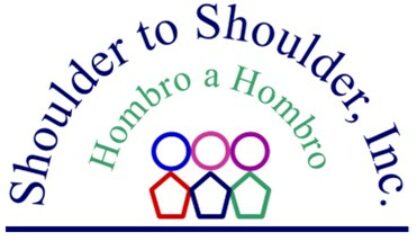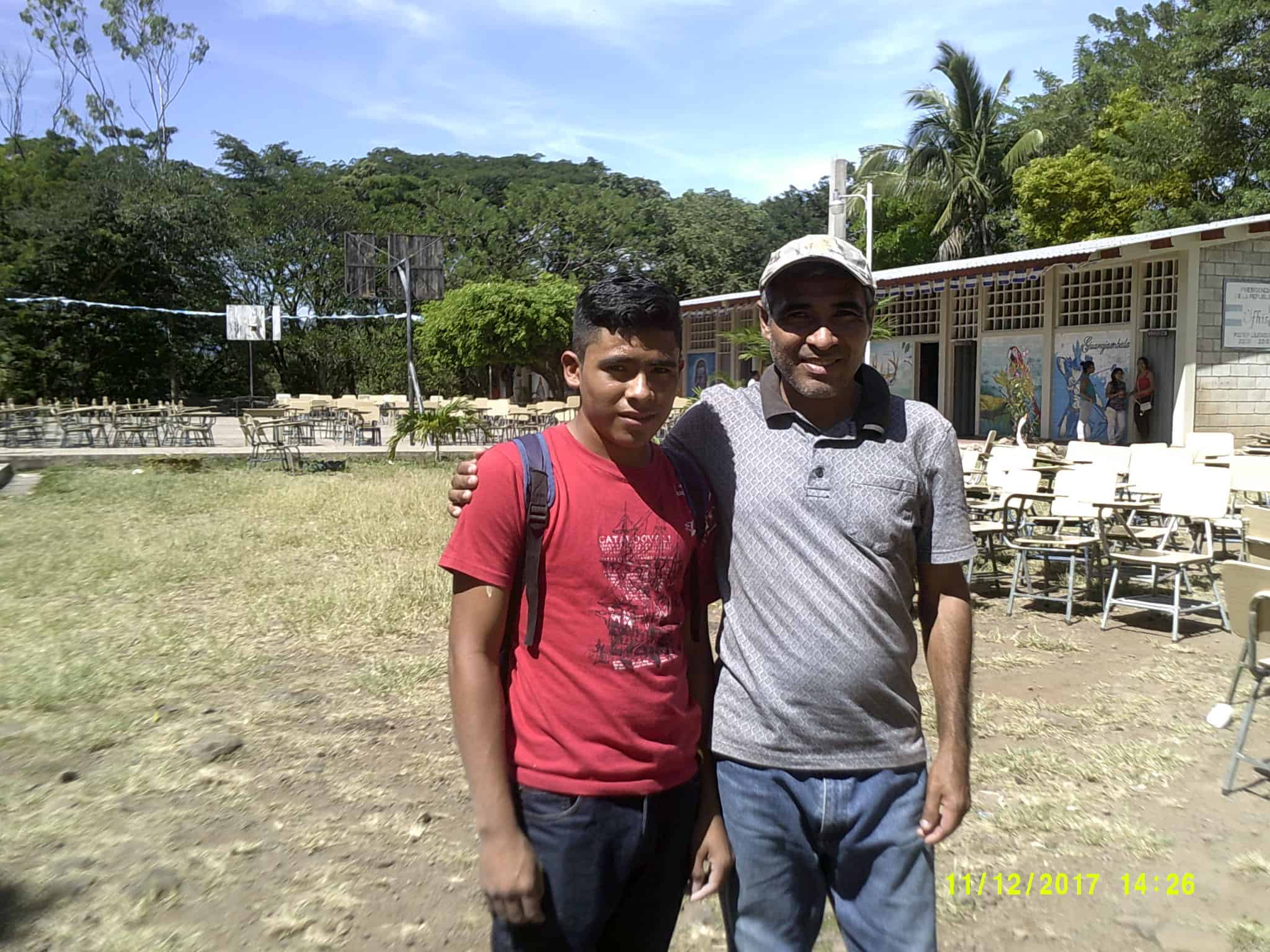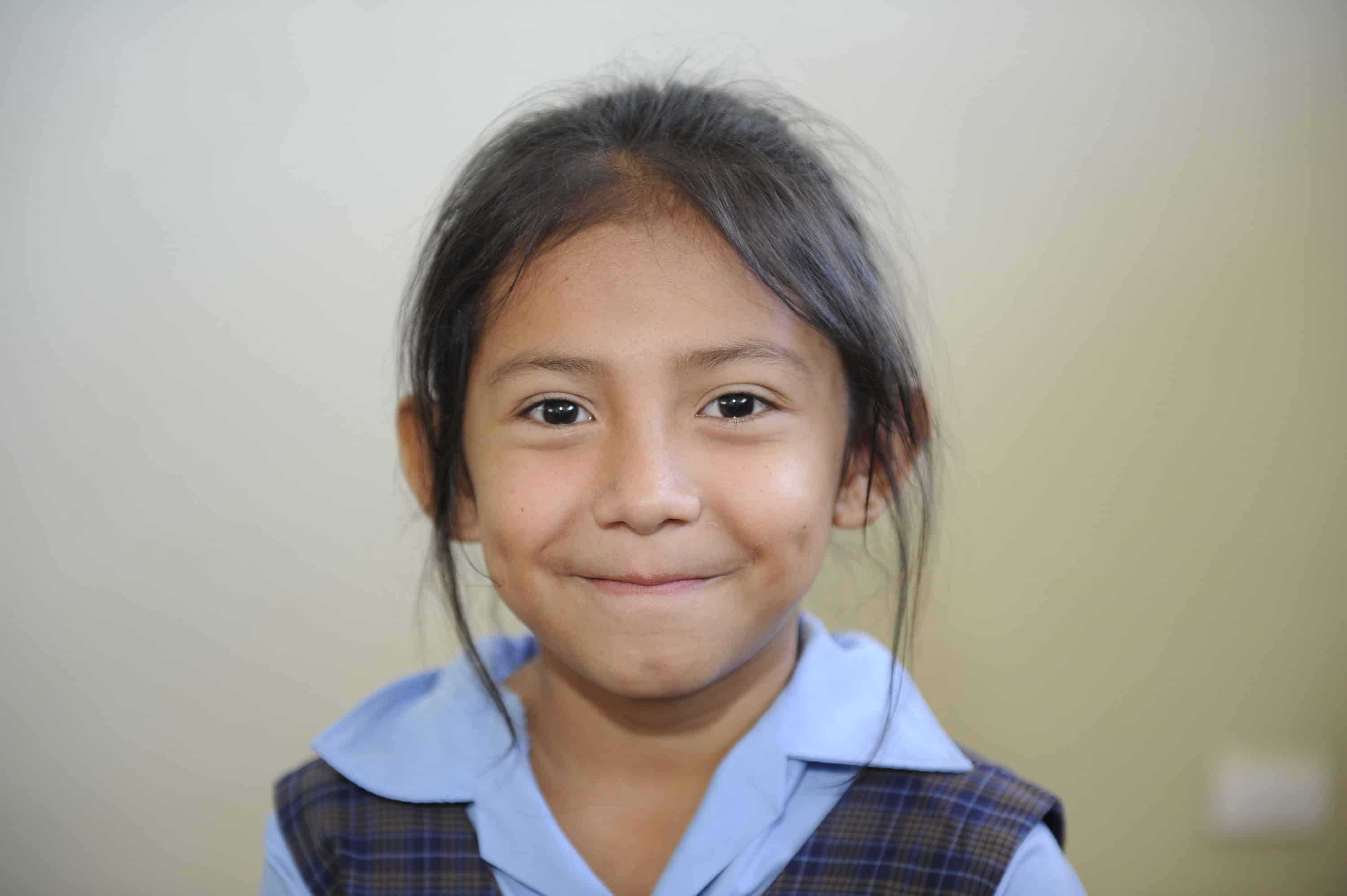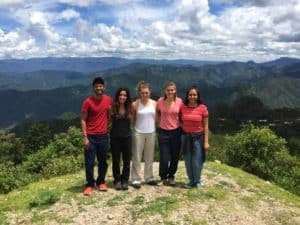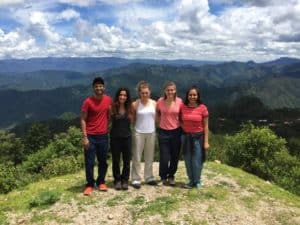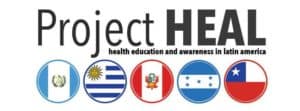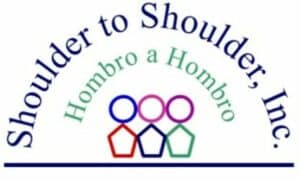Old Dogs With New Tricks
Disclaimer: Analogies almost always hobble, limp, and may seem to express things that were unintended. Here, the term “old” should simply be interpreted as meaning experienced; veterans, if you will. The term “dogs” is an unfortunate accident of a well utilized adage that shifts understanding according to individual preference in pets. Had our linguistic history evolved differently, the term might have been replaced with “cat,” or “dolphin,” or any number of anthropomorphized biological entities.
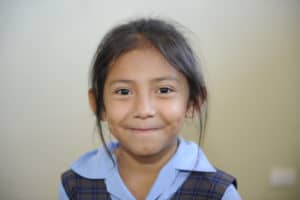
Emely is a third grader at the bilingual school in Camasca. She travels to and from the school a half hour each way with her father Wilson, the van driver, and fourteen other children from Concepcion. Emely was named in honor of Dr. Emily Harrison. Dr. Harrison was recently at the Guachipilincito Clinic with Dr. David McKenna to run yet another successful medical service trip. Dr. Harrison has been faithfully coming here for years. The testament of her commitment is surpassed only by the integrity of the service that she and her teams have achieved within the community. I wonder what accounts for such dedication that has stayed so fresh and empowering.
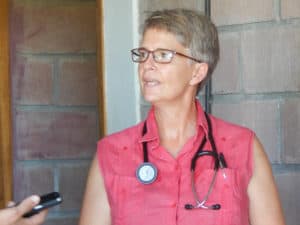
I meet Emily, as we almost always do with service trips, when they arrive at their hotel in La Esperanza. Most of the small group with her has been to Honduras with Shoulder to Shoulder on earlier trips. Dr. McKenna collaborated with the building of the clinic, has been here many times, and serves on the Board for the continuing mission. His daughter, Madeline, a senior at Notre Dame University, has also been here on many occasions, but I am meeting her for the first time. Robert Ashworth, the pharmacist, is on his third trip. Two resident physicians, Shannon, who has been to Honduras, but not with Shoulder to Shoulder, and Keshia, who has been to Guatemala, complete the team. After putting her gear away in her room, Emily returns to the lobby and sits to my side on a sofa. Her wide, characteristic smile greets me and reminds me of how fortunate I am to count people like Emily as friends.
She engages me with inquiries about what’s been going on since we last were together. “What’s going on for Laura and I personally? What’s new for Shoulder to Shoulder? How is the work with education proceeding?” Her genuine interest would yield one to believe that she had never been to Honduras before this trip and knew nothing about Shoulder to Shoulder’s work. There is a freshness and enthusiasm present in her manner, like a freshman away from home at college for the first time. But this is not her first rodeo (yet another less than ideal metaphor), and none of this is new to her. The city she has come to, the hotel, her bus ride tomorrow to Concepcion (along newly paved roads), her pick up ride to Guachipilincito (along all too familiar unpaved and treacherous roads), the clinic, the people of the community, and the patients she will see are all old hat. And yet what seems to dominate her interactions with everything that should simply be routine, is the possibility of the new and the innovative; that something exciting and vibrant can spring forth at any moment. That attitude, that firm conviction, is what enlivens and gives meaning to this service.
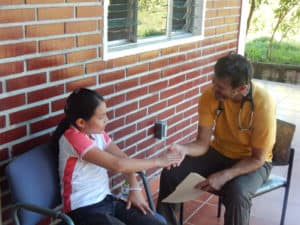
Among these old routines sprout new possibilities. This service trip in October is new. Brown/Wingate has been coming to Honduras twice a year, but this trip is the third trip this year, and the hope is that it will become a regular occurrence toward more sustainable service to the community. Additionally, Shoulder to Shoulder, with funding from Brown has just hired Iris as the Community Development Coordinator. She will work in the community when the service team is not on site to assess the needs of the community, run development and service programs, and provide feedback to Dr. Harrison and the Board as to best practices in maintaining a service mission in Guachipilincito. This development thrills Emily as it has been being planned and talked about for years. Now it has come to be, a realization of that commitment to developing meaningful, empowering service.
Laura and I visit Guachipilincito and the service team on Wednesday. At first glance, it appears pretty much the same as all other service trips. They’re seeing patients. Some of them present serious illnesses and conditions, some are reviewing their management of chronic conditions, and some, as always, have come with complaints of pain that they hope will gain them a prescription for Tylenol. Not much new, or so it seems. We sit down to lunch. Madeline learned yesterday that she was accepted to one of the many medical schools to which she applied. It’s the University of Cincinnati, and that reminds her that Shoulder to Shoulder began because of the work of that university. The more things change, the more they remain the same. But Madeline is so committed to the work that she has been exposed to her whole life that she is considering volunteering at our bilingual school during a gap year. That is certainly something new growing out of the old. It’s reason to celebrate.
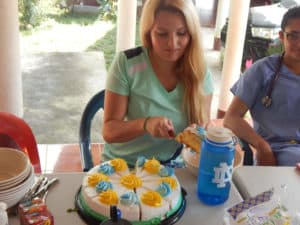
¡Felicidades! Congratuations, Maddy! We are the change that brings good to our world.
Who Heals Who?
We are always looking to receive new groups and individuals to visit us and share in the incredible work of Shoulder to Shoulder. Principle among the reasons for this is that people are the primary resource for development work. Shoulder to Shoulder is built upon the commitment of so many who develop relationships with the people of Southern Intibucá. But the more selfish reason for looking for new individuals and groups is that we have such a great time being their hosts. Generally, it takes us a lot of work to develop relationships with universities and groups to bring them to Honduras. But sometimes our opportunities just seem to fall out of the sky into our laps.
Sometime back in the Spring we got an email from an undergraduate student, Nava, at Duke University. The group, Project HEAL (Health Education and Awareness in Latin America), had been coming to Honduras annually with another NGO. It wasn’t going to work this year, and Nava was a little desperate to find another NGO to host them. We, of course were ecstatic, and even though we had something to learn about what they intended to do, and even though they were coming at a very busy time of our year, we immediately said yes. We figured we’d work out the details as we went along.
Five students, Nava, Noelle, Dahlia, Judy, and Lissa, would come to Camasca for five weeks to conduct four separate research projects on personal and community health issues. It would be during July and early August when Laura and I would be away for a time in the US; MAHEC would be here for two weeks in a forty person brigade; two MSW students from the University of Chicago would be doing an internship here. Then, to top it off, the surprise component would be that we would have to replace our brigade coordinator. Could we pull this off? Could we give Project HEAL a meaningful experience while we had so many other irons in the fire? Of course we could, and we did.
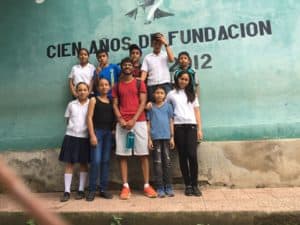
They wanted to live with families while here to get more of a feel for life in Camasca. We’ve done a little of this with volunteers, but finding homes for five students for five weeks was a big challenge. We contacted the teachers at the local primary school, the Urbana, who have been looking for ways to partner with Shoulder to Shoulder. Three teachers agreed to take the five students. There was a little bit of a catch, however. The Urbana wanted the students to teach English to the students while they were here. That wasn’t part of the project portfolio that Nava had given us. But when we approached him with the proposal, he graciously agreed. The students had never taught before. They had some anxiety about it when we picked them up in San Pedro Sula. But we had a feeling they might find some magic among the children.
They busied themselves with their four projects: Teen Pregnancy and Relational Dynamics in Adolescents; Self-Esteem for Adolescents; Cervical Cancer Attitudes, Awareness, Prevention and Treatment; and Trash Disposal and Related Attitudes/Behaviors. They visited families in the town center and among our smaller communities, doing interviews and conducting focus groups. They gathered their data, analyzed it, and put together some community trainings. They returned to the families and groups, shared their results, and taught about healthy practices. They did great work, and they will share with Shoulder to Shoulder the reports on their topics. We’re certain these will become valuable tools as we continue the work they invested in and prepare for their return next year.
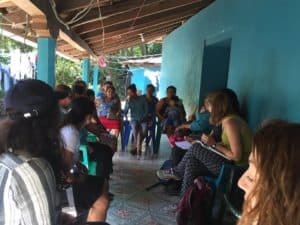
I guess we could say they lived up to their project name and this was a ‘healing’ event. But we have a feeling that the really impactful moments of their time with us happened beyond their diligent work in a less anticipated way.
We planned a debriefing with the group on the day before they were scheduled to leave Camasca. Their visit to our home happened immediately following their going away celebration at the Urbana School with the teachers and the students. We couldn’t start the debriefing right away because the five Duke students all arrived at our house in tears. The children, the teachers, and the families with whom they stayed, all expressed their affection for them and how much they would miss them. The kids had come so close to them — and they so close to the kids — that they had indeed become part of this community. The families now had adopted a son and four daughters, new brother and sisters, to the point that one of the Duke students was speaking to us of her cousin when we realized that it was a cousin of the family with whom she was staying. Their study was very important and meaningful, and yet the memories impressed on their hearts may have little to do with the particulars of their service. Their memories will forever include hiking up mountains, attending a rodeo during the town’s fair, taking a trip to the hot baths of Gracias, Lempira, being cared for by a second mother when suffering a stomach virus, and most especially the joyous smiles of children who are so welcoming of new friends.
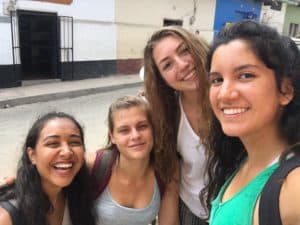
I suppose we often consider ‘healing’ a clinical response to persons who present themselves in need. We heal others when we diagnose their need and prescribe and initiate a treatment. But healing and finding health is so much more. It seems that these Duke students have taught and learned that healing is about meeting and being met, and ultimately loving and being loved.
Click above for Facebook Page
Nava, Noelle, Dahlia, Judy, and Lissa — you all have homes here. We look forward to your return.

